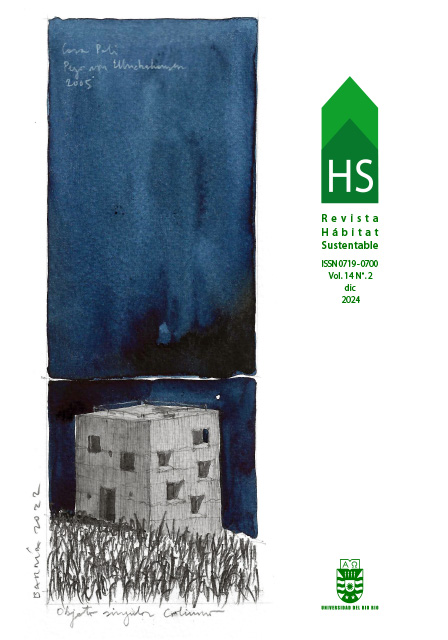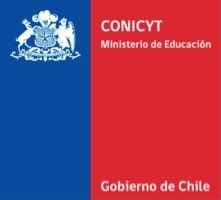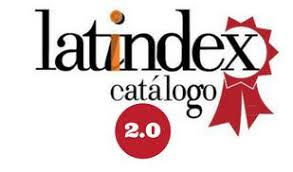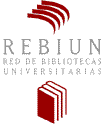Comparação e calibração de índices de conforto para a estação quente em uma cidade semiárida do noroeste do México
DOI:
https://doi.org/10.22320/07190700.2024.14.02.02Palavras-chave:
modelo psicofisiológico, conforto térmico, atividade intensa, calibração de escalasResumo
A análise dos modelos de conforto e do efeito das condições microclimáticas extremas é importante para determinar a relação entre os problemas de saúde das pessoas que realizam actividades em espaços abertos. O trabalho propõe um modelo psicofisiológico regional para indivíduos com actividades físicas intensas (desporto) em espaços públicos ao ar livre em clima quente e seco extremo (Mexicali, Baja California), que foi contrastado com o Índice Universal de Clima Térmico para o calibrar e assim estabelecer uma base comparativa para formular testes de hipóteses para avaliar a sua aplicabilidade. Verificou-se que o modelo regional alcançou uma taxa de exatidão de 67% em comparação com o Índice Climático Térmico Universal, que obteve 31% de exatidão não calibrada e 53% de exatidão calibrada. A conclusão deste processo evidencia a pertinência, a exatidão e a eficácia da utilização de modelos regionais específicos em relação aos que tendem a generalizar as condições de perceção térmica.
Downloads
Referências
BARCIA-SARDIÑAS, S., OTERO-MARTÍN, M., HERNÁNDEZ-GONZÁLEZ, D., GÓMEZ-DÍAZ, D., y GÓMEZ-CAMACHO, L. (2020). Comparación de diferentes índices bioclimáticos en Cuba. Revista Cubana de Meteorología, 26(3). http://scielo.sld.cu/scielo.php?script=sci_arttext&pid=S2664-08802020000300008&lng=es&tlng=es.
BLAZEJCZYK, K., TOKURA, H., BORTKWCZ, A., y SZYMCZAK, W. (2000). Solar radiation and thermal physiology in man [Paper presentation]. International Congress of Biometeorology & International Conference on Urban Climatology, 15, 1999, Sydney. Geneva: World Meteorological Organization, p. 267-272.
BLAZEJCZYK, K., EPSTEIN, Y., JENDRITZKY, G., STAIGER, H., y TINZ, B. (2012). “Comparison of UTCI to selected thermal indices”. International Journal of Biometeorology, 56(3), 515– 535.
BLAZEJCZYK, K. y KUNERT, A. (2011). Bioclimatic principles of recreation and tourism in Poland. Institute of Geography and Spatial Organization.
BOJÓRQUEZ-MORALES, G., GÓMEZ-AZPEITIA, G., GARCÍA-CUETO, R., ROMERO-MORENO, R., LUNA-LEÓN, A., GARCÍA-GÓMEZ, C., y RUIZ-TORRES, P. (2014). Confort térmico en espacios públicos exteriores en periodo cálido. Ekotectura, Bogotá, Colombia.
BOUSSAIDI, K., DJAGHROURI, D., BENABBAS, M. y ALTAN, H. (2023). Assessment of Outdoor Thermal Comfort in Urban Public Space, during the Hottest Period in Annaba City, Algeria. Sustainability, 15(15), 11763. https://doi.org/10.3390/su151511763
BRÖDE, P., FIALA, D., BŁAŻEJCZYK, K., HOLMÉR, I., JENDRITZKY, G., KAMPMANN, B., TINZ, B., y HAVENITH, G. (2012). Deriving the operational procedure for the Universal Thermal Climate Index (UTCI). International Journal of Biometeorology, 56(3), 481–494. https://doi.org/10.1007/s00484-011-0454-1
CANDIDO, C., y de DEAR, R. (2012). From thermal boredom to thermal pleasure: a brief literature review. Ambiente Construído, 12(1), 81-90. https://doi.org/10.1590/S1678-86212012000100006
CARLUCCI, S., y PAGLIANO, L. A. (2012). A review of indices for the long-term evaluation of the general thermal comfort conditions in buildings. Energy and Buildings, 53(1), 194-205. https://doi.org/10.1016/j.enbuild.2012.06.015
DASHRATH-KHAIRE, J., ORTEGA-MADRIGAL, L., y SERRANO-LANZAROTE, B. (2021). Outdoor thermal comfort in built environment: A review of studies in India. Energy and Buildings, 303, 113758. https://doi.org/10.1016/j.enbuild.2023.113758
DE FREITAS, C. R., y GRIGORIEVA, E. A. (2015). A comprehensive catalogue and classification of human thermal climate indices, International Journal of Biometeorology, 59, 109-120. https://doi.org/10.1007/s00484-014-0819-3
DE DEAR, R., (2011). Revisiting and old hypothesis of human thermal perception: alliesthesia. Building Research & Information, 39(2), 108-117. https://doi.org/10.1080/09613218.2011.552269
EPSTEIN, Y., y MORAN, D. S. (2006). Thermal comfort and the heat stress indices. Industrial Health, 44(3), 388-398. https://doi.org/10.2486/indhealth.44.388
FANG, Z., FENG, X., LIU, J., LIN, Z., MING-MAK, J., NIU, J., TSE, K., y XU, X. (2019). Investigation into the differences among several outdoor thermal comfort indices against field survey in subtropics, Sustainable Cities and Society, 44, 676-690. https://doi.org/10.1016/j.scs.2018.10.022
FERNÁNDEZ GARCÍA, F., GALÁN, E., y CAÑADA TORRECILLA, R. (2012). Caracterización del régimen bioclimático medio del área metropolitana de Madrid, mediante la aplicación de la temperatura fisiológica (PET), Territoris, 8, 505-514. https://raco.cat/index.php/Territoris/article/view/259755
GHANI, S., MAHGOUB, A., BAKOCHRISTOU, F. y ELBIALY, E. (2021). Assessment of thermal comfort indices in an open air-conditioned stadium in hot and arid environment, Journal of Building Engineering. 40, 102378. https://doi.org/10.1016/j.jobe.2021.102378
GONZÁLEZ GONZÁLEZ F. (2021). Propuesta metodológica para el análisis de las afectaciones en la salud y confort térmico del ser humano debido al cambio climático en tres regiones de México, Acta universitaria, 31, e3071, https://doi.org/10.15174/au.2021.3071
International Organization for Standardization. ISO 10551. (2019) Ergonomics of thermal enviroment – assessment of the influence of the thermal environment using subjective judgement scales. Ed. International Organization for Standardizations, Ginebra.
International Organization for Standardization. ISO 7730, (2006). Moderate thermal enviroment-determination of the PMV and PPD indices and specifications of conditions of thermal confort. E.U.A.: International organizations for Standardizations.
International Organization for Standardization. ISO 9920. (2007). Ergonomía del ambiente térmico. Estimación del aislamiento térmico y de la resistencia a la evaporación de un conjunto de ropa. E.U.A.: International organizations for Standardizations.
International Organization for Standardization. ISO 7726. (1998). Ergonomía de los ambientes térmicos. Instrumentos de medida de las magnitudes físicas. E.U.A.: International organizations for Standardizations.
JIAQI, N., JIANGPENG, X., HONGQIAO Q., JINMING H., JIANFENG D., GUIFENG H., y JIE Y., (2022). Influence of thermal comfort of green spaces on physical activity: Empirical study in an urban park in Chongqing, China, Building and Environment, 219, 109168. https://doi.org/10.1016/j.buildenv.2022.109168
JENDRITZKY, G., DE DEAR, R., y HAVENITH, G. (2012). UTCI—Why another thermal index?. International Journal of Biometeorology, 56(3), 421-428. https://doi.org/10.1007/s00484-011-0513-7
JING, W., QIN, Z. y MU, T. (2024). Evaluating thermal comfort indices for outdoor spaces on a university campus, Scientific Reports, 14, 21253. https://doi.org/10.1038/s41598-024-71805-5
JOHANSSON, E. (2006). Influence of urban geometry on outdoor thermal comfort in a hot dry climate: a study in Fez, Morocco, Building and Environment, 41(10), 1326-1338. https://doi.org/10.1016/j.buildenv.2005.05.022
LAI, D., LIAN, Z., LIU, W., GUO, C. LIU, W., LIU, K. y CHEN, Q., (2020). A comprehensive review of thermal comfort studies in urban open spaces, Science of The Total Environment, 742, 140092. https://doi.org/10.1016/j.scitotenv.2020.140092
LIU, Z., LI, J., y XI, T. (2023). A Review of Thermal Comfort Evaluation and Improvement in Urban Outdoor Spaces, Buildings, 13(12), 3050. https://doi.org/10.3390/buildings13123050
LÓPEZ-CAÑEDO, J.Y., RINCÓN-MARTÍNEZ, J.C., y FERNÁNDEZ MELCHOR, F. (2021). Estimation of thermal comfort by physical variable of the thermal environment: A study in open spaces at UABC-Sauzal, México, Revista de Ciencias Tecnológicas, 4(2), 58–80. https://doi.org/10.37636/recit.v425880
MANAVVI, S. y RAJASEKAr, E., (2021). Evaluating outdoor thermal comfort in “Haats” – The open air markets in a humid subtropical region, Building and Environment, 190, 107527. https://doi.org/10.1016/j.buildenv.2020.107527
MANAVVI, S., y RAJASEKAR, E. (2022). Evaluating outdoor thermal comfort in urban open spaces in a humid subtropical climate: Chandigarh, India, Building and Environment, 209, 108659. https://doi.org/10.1016/j.buildenv.2021.108659
MANAVVI, S., y RAJASEKAR, E., (2023). Assessing thermal comfort in urban squares in humid subtropical climate: A structural equation modelling approach, Building and Environment, 229, 109931. https://doi.org/10.1016/j.buildenv.2022.109931
MARCHANTE, G., y GONZÁLEZ, A. (2020). Evaluación del confort y disconfort térmico, Ingeniería Electrónica, Automática y Comunicaciones, 41(3), 21-40. http://scielo.sld.cu/scielo.php?script=sci_arttext&pid=S1815-59282020000300021&lng=es&tlng=es
MARTÍN DEL CAMPO SARAY, F. J., Valladares ANGUIANO, R., BOJÓRQUEZ MORALES, G., y GARCÍA GÓMEZ, C. (2020). Development of thermal habitability index in cold period for outdoor public spaces. Revista De Ciencias Tecnológicas, 3(3), 145–172. https://doi.org/10.37636/recit.v33145172
MARTÍNEZ-BERMÚDEZ, E., y RINCÓN-MARTÍNEZ, J. C. (2024). Estimación del confort térmico en espacios exteriores: evaluación del periodo frío en Ensenada, Baja California. Revista de Arquitectura (Bogotá), 26(2), 151-166. https://doi.org/10.14718/REVARQ.2024.26.3637
MONTEIRO, L., y ALUCCI, M. (July 2011). Proposal of an outdoor thermal comfort index: empirical verification in the subtropical climate [Conference Paper]. Architecture And Sustainable Development, Proceedings of PLEA 2011, Louvain-la-Neuve, Belgium. https://www.researchgate.net/publication/345855050_Proposal_of_an_outdoor_thermal_comfort_index_empirical_verification_in_the_subtropical_climate
MONTEIRO, L., y ALUCCI, M. (29 June - 3 July 2009). Thermal Comfort Index for the Assessment of Outdoor spaces in Subtropical Climates [Conference Paper]. The seventh International Conference on Urban Climate, Yokohama, Japan. http://www.ide.titech.ac.jp/~icuc7/extended_abstracts/pdf/375911-1-090514092824-005.pdf
NIKOLOPOULOU, M., y LYKOUDIS, S. (2006). Thermal comfort in outdoor urban spaces: Analysis across different European countries, Building and Environment, 41(11), 1455-1470. https://doi.org/10.1016/j.buildenv.2005.05.031
NÚÑEZ-DE ANDA, A., RINCÓN-MARTÍNEZ, J.C., BOJÓRQUEZ-MORALES, G., y LLAMAS-ESTRADA, A. (2024). Confort higrotérmico en espacios públicos abiertos de clima mediterráneo en periodo de transición térmica, Ingeniería Investigación y Tecnología, 25(1), 1-12. https://doi.org/10.22201/fi.25940732e.2024.25.1.005
PENG, Y., FENG, T., y TIMMERMANS, H. (2019). A path analysis of outdoor comfort in urban public spaces, Building and Environment, 148, 459-467. https://doi.org/10.1016/j.buildenv.2018.11.023
RINCÓN-MARTÍNEZ J. C., MARTÍNEZ-TORRES, K., GONZÁLEZ-TREVIZO, M. E. y FERNÁNDEZ-MELCHOR, F (2020). Modelos matemáticos para estimar el confort térmico adaptativo en espacios interiores: Un estudio en la transición térmica de Ensenada, B.C., Ingeniería Revista Académica, Universidad Autónoma de Yucatán, 24(1), 1-17. https://www.revista.ingenieria.uady.mx/ojs/index.php/ingenieria/article/view/186
SARHADI, F., y RAD, V.B. (2020). The structural model for thermal comfort based on perceptions individuals in open urban spaces, Building and Environment, 185, 107260. https://doi.org/10.1016/j.buildenv.2020.107260
TUMINI, I., y PÉREZ FARGALLO, A. (2015). Aplicación de los sistemas adaptativos para la evaluación del confort térmico en espacios abiertos, en Madrid, Hábitat Sustentable, 5(2), 57–67. https://revistas.ubiobio.cl/index.php/RHS/article/view/1933
Downloads
Publicado
Como Citar
Edição
Secção
Licença
Direitos de Autor (c) 2024 Hiram Eduardo Urias-Barrera

Este trabalho encontra-se publicado com a Licença Internacional Creative Commons Atribuição-CompartilhaIgual 4.0.
O conteúdo dos artigos publicados em cada número do Habitat Sustentável é da exclusiva responsabilidade dos autores e não representa necessariamente o pensamento ou compromete a opinião da Universidad del Bío-Bío.
Os autores mantêm os seus direitos de autor e concedem à revista o direito de primeira publicação da sua obra, que está simultaneamente sujeita à Licença de Atribuição Creative Commons CC BY-SA que permite a outros partilhar, transformar ou criar novo material a partir desta obra para fins não comerciais, desde que a autoria e a primeira publicação nesta revista sejam reconhecidas, e as suas novas criações sejam licenciadas sob os mesmos termos.











 Programa de Informação Científica/Concurso Fondos de Publicación de Revistas Científicas 2018/ Proyecto Mejoramiento de Visibilidad de Revistas UBB (Código:FP180007)
Programa de Informação Científica/Concurso Fondos de Publicación de Revistas Científicas 2018/ Proyecto Mejoramiento de Visibilidad de Revistas UBB (Código:FP180007)





